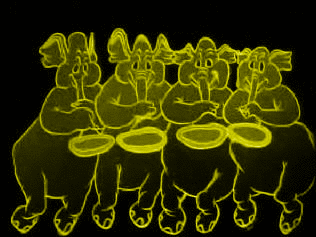It’s Hadoop’s world. We just live in it. Welcome to #hw2011!
That was the starting battle-cry from Mike Olsen, CEO of Cloudera as he kicked off the third Hadoop World Conference. Indeed, after drinking the kool-aid for two days, I’ve been almost fully ingested, stored and transformed even if I have yet to be accessed, let alone managed.
For it seems that within a few years, all digital information, including my electronic Freudian id and perhaps my ego as well, will be deposited into Hadoop, forever ready to be accessed via any number of different social and structured graphs.
Hadoop background
Some have speculated that within five years, Hadoop will hold 50% of the world’s information. I now believe that to be true, albeit potentially a copy of the other 50%, if not uniquely in Hadoop.
Hadoop and its Google ancestors enable storage on a scale and scope never previously possible with baked-in redundancy and resiliency at lower operational cost than big iron solutions. And the software is free, needing nothing more common commodity hardware and a Java host.
Google created and shared the concept. Doug Cutting and a colleague started an independent Apache licensed implementation five years ago. Since then, it has been adopted by the largest web properties: Facebook, Twitter, eBay among others. Even major enterprises like JP Morgan and Disney have been using it in production for at least two years.
Commercially supported releases are available from Cloudera and Hortonworks.
The Conference
Hadoop is still in the early adopter stage and has not yet crossed Geoff Moore’s Chasm. This is most reminiscent of the state of the web circa 1994. Forward looking companies are making incredible strides in competitive advantage using primitive tools and smart developers.
Cloudera is doing great job in championing the ecosystem. They recognize that growing the overall market and adoption is the correct long term path to riches. I look forward to #hw2012.

 Follow
Follow